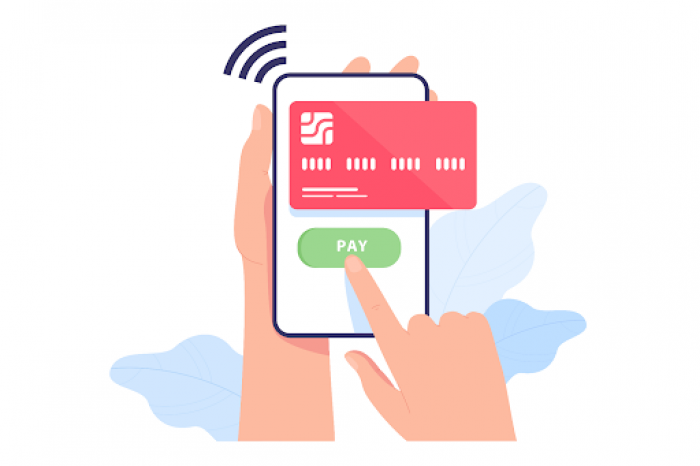Adding payments to your mobile or web app can bring new monetization opportunities and make the experience of using the app smoother. But there are risks and regulatory considerations in doing financial transactions. So, there are several considerations that it is better to comprehend before going deep into payments. These are 7 things you need to know before you add payments to your app.

1. Follow Security Best Practices
Security should be the number one priority when dealing with payments. A breach could erode user trust, lead to financial and legal liabilities, and even shut down your business.
When designing your payments infrastructure:
- End-to-end encrypt sensitive user data with industry-standard protocols such as TLS and AES-256.
- Whenever possible, store payment tokens rather than actual credit card numbers on your servers. Use payment processors that provide tokenization.
- Client and server inputs should be validated to avoid such attacks as SQL injection or cross-site scripting.
- Get periodic security audits by independent companies.
Strong security practices also contribute to payment compliance, ensuring adherence to regulatory standards such as PCI DSS, which are critical for avoiding fines and maintaining your ability to process payments.
Also, make sure the whole organization is secure by training the staff, controlling access, and ensuring SOC 2 compliant service partnerships.
Exceeding expectations when it comes to security is good to safeguard both your users and your business.
2. Understand Payment Provider Fees
Payment processing involves costs like interchange fees, payment network fees, cross-border fees, chargeback fees, and platform fees. These can add up.
As an example, Stripe has a fee of 2.9% + 0.30 per transaction. Therefore, a 100 transaction would attract a fee of 3.20. Multiply that by thousands of transactions, and the costs are high.
Comparing the fee structure of different payment processors, such as Stripe, Braintree, Square, PayPal, and Adyen, will help you shop around and find the best deal when choosing a payment processor. Consider:
- Transaction rates. The % cut per transaction. These usually range from 2-4%.
- Fixed per-transaction costs. Like $0.30 per sale above.
- Chargeback fees. It can be 15−25 when users dispute charges.
- Platform or gateway fees. For payment processing integrations.
- Monthly or annual plans. Some processors offer flat-rate plans for high volume.
Optimize your pricing, payouts, and reporting to account for these fees accordingly. The lowest rate processor is not always the best fit.
3. Design a Seamless Payments User Experience
Users expect payments to be frictionless, whether purchasing digital goods inside an app or paying bills.
Design factors like UI flows, transaction speed, and error handling impact conversion rates and customer satisfaction.
Considerations for a great payments UX include:
- Fast checkout with saved payment options, one-click purchases, or shopping cart integration.
- Mobile optimization with inputs and validation tailored to touch devices.
- Clear confirmation of payment status and receipts.
- Minimal data entry by integrating identity verification or card scanning.
- Error handling with specific, actionable messages to resolve issues.
Furthermore, it is very convenient to give users the possibility to store their payment details and make single-click payments in the future.
Saved payments, however, require attention to access control and session security to avoid fraud. Strike the correct balance according to your use case.
4. Understand Local Regulations and Licensing
Payments are a highly regulated industry. Rules vary across jurisdictions related to data protection, stored value, AML monitoring, escrow requirements, and more.
For example, the EU requires strong user consent and data minimization for storing payment information under PSD2 and GDPR. India enacted UPI with specific transaction monitoring to prevent fraud. And Japan applies complex authorization procedures around recurring transactions.
When expanding to new markets, first assess regulatory implications, including:
- Data residency. Where user data can be stored and processed globally.
- Data protection. Local privacy, security, and breach notification laws.
- Licensing. Registrations or financial licenses are required for payment activities.
- Taxes. VAT, sales tax collection, reporting, and remittance obligations.
The failure to comply may expose them to fines, loss of payment flow, and even operating licenses. Early partner with regional counsel and processors to get around requirements.
_1751456006.png)
5. Plan Rigorous Testing
Payments combine sensitive user data with complex financial systems. Defects can quickly spiral into disastrous scenarios.
Before launch, complete extensive testing across:
- User flows. Such as checkout, refunds, saved credentials, etc. Validate error handling.
- Infrastructure. Scale load testing on databases and servers to peak capacity.
- Security. Perform penetration tests and code audits to identify vulnerabilities.
- Compliance. Confirm data flows, access controls, and operations meet legal standards.
- Cross-platform. Test across browsers, devices, and operating system versions.
Use payment processor test credit card numbers to make test transactions without impacting the financial networks.
Continuous monitoring using such tools as AppDynamics and Sentry can help to detect production problems before they cause significant damage. It is worth launching beta access to a small group of users before the public launch.
Do not hurry up payments testing or find shortcuts. Otherwise, the real money and real users will be affected in the future.
6. Stand Up Customer Support
Any payment experience will inevitably involve some users encountering declined cards, failed transfers, or similar hiccups. They will reach out for support.
To provide high-quality assistance:
- Staff support teams with payment domain expertise to troubleshoot technical issues.
- Create self-help content like FAQs and documentation for common problems.
- Enable chat/phone support for urgent user inquiries.
- Integrate analytics to identify bad failure points.
Also, set response time, uptime, and error rate service level agreements (SLAs). Refunds or credits as compensation policies might be required in case of SLA violations.
Users will not forget the way your company deals with support when the payments are incorrect. Invest appropriately.
7. Strategically Stage Rollouts
Given the complexity, first-time payment integrations often benefit from a staged rollout strategy. This allows addressing issues on a smaller scale before reaching full launch.
Potential phases include:
- Alpha. Complete foundational integration work and initial testing.
- Closed beta. Launch payments to a small percentage of users for live testing.
- Limited launch. Expand to a wider user base with caps on transaction volumes.
- Global launch. Full public access with feature marketing.
Keep a close eye on such KPIs as payment completion rates, decline rates, chargebacks, and platform errors at every stage.
In case metrics improve worse than targets at any given step, check root causes and proceed further. As an example, you can review the patterns of fraud, bugs that need to be fixed, or additional training that is necessary in customer support.
A gradual process enables such critical changes before scale. Payments should be done at a slow pace, and quality should never be sacrificed to speed.
Key Takeaways
The payment features enable the creation of new monetization, experiences, and conveniences for the users. However, financial, regulatory, and security concerns are also brought in by payments.
To integrate payments without any pitfalls, you should adhere to the best practices regarding security, costs, UX design, compliance, testing, and support.
Making payments a planned and strategic process will position your app to be sustainable in the long run as it continues to be adopted. Simply make sure to collaborate with the providers, advisors, and regulators to avoid the complexities.
With these seven essential factors addressed, payments can provide a major boost for any modern web or mobile application.
Post Comment
Recent Comments
Michael Tesla
Jul 3, 2025As a mobile app developer, this article provided invaluable insights into integrating payment systems. The emphasis on security best practices, understanding payment provider fees, and designing a seamless user experience were particularly helpful. I now feel more confident in navigating the complexities of adding payments to my app.






Jessica Lora
Jul 3, 2025While the article provides a solid overview, I was hoping for more technical details on integrating specific payment gateways. A deeper dive into API integrations and code examples would have been helpful for developers looking to implement these strategies directly.